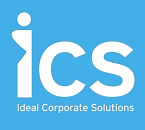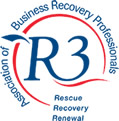Members’ Voluntary Liquidation
We provide an efficient and cost effective service for business owners who are looking to place their company into solvent liquidation.
What is members’ voluntary liquidation?
Members Voluntary Liquidation (MVL) or Solvent Liquidation is a process which is generally a tax efficient way of shareholders extracting funds from a company which has ceased to trade. At ICS our typical MVL instructions come from our network of accountant introducers, whose clients have either sold their company’s business and the limited company is cash rich, or company’s which have run their course and the shareholders want to realise their investment in the most tax efficient way possible, liquidating the business assets.
What is a solvent company?
A company can be regarded as solvent when it is able to pay all liabilities in full, as well as statutory interest and any costs involved with the winding up procedure, within 12 months from the Declaration of Solvency.
Why would a company choose solvent liquidation?
Generally, MVL is a tax efficient process for shareholders of a company to realise their investment i.e. the company’s assets, via a capital distribution. Subject to meeting certain criteria, the shareholders may qualify for Entrepreneurs Relief, therefore their returns are subject to tax at a much lower rate than usual. In most instances, the company will have ceased trading and all creditors / liabilities will have been settled, all or most physical assets will have been sold, with the company’s only asset therefore being made up of cash at bank. Should there be remaining assets to realise then they can be dealt with through the liquidation process, either by the liquidator taking steps to sell the asset or alternatively, by undertaking the Distribution in Specie procedure – which is essentially distributing the asset to the shareholders in lieu of its cash value.
The solvent liquidation process
- Ideally the company will have ceased to trade and final accounts will have been prepared by the company’s accountant and signed off by the directors. Additionally, it is beneficial in most cases for all tax (and other) liabilities to have been settled, otherwise interest at 8% per year begins to accrue from the date of liquidation.
- A formal Declaration of Solvency must be produced. This document will provide details on the company’s assets and liabilities, which will prove that the company is both solvent and has the ability to repay its creditors, with statutory interest, in a maximum of 12 months. The company’s directors must swear the documents in front of a solicitor, confirming they believe its content to be true.
- A board meeting is held at which the decision is made to recommend to the shareholders that the company be placed into solvent liquidation, the directors will sign off all relevant notices required to commence the MVL procedure.
- A General Meeting of shareholders is held at which shareholders will resolve to place the company into solvent liquidation, so long as 75% of shareholders are in favor, as well as other resolutions relating to the distribution of the company’s assets.
- It is the role of the appointed liquidator to settle any outstanding debts with creditors (if any) before distributing the company’s assets amongst the shareholders.
- The liquidator must obtain clearance from government departments to confirm that they have no objection to the liquidation being completed.
- Following the filing of the liquidator’s final report at Companies House, the company is removed from the register three months later and is dissolved.
How to find out more about members’ voluntary liquidation
If your company has come to the end of its life cycle and has accumulated cash and/or assets to be distributed to the shareholders, it is important to take proper professional advice in order to understand how best to maximise the returns to shareholders.
Our experts are well versed in the MVL process and have significant experience in this field. Please visit our contact us page and fill in the form to get in touch or give our team a call on 0800 731 2466.



